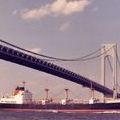As you may remember my wife and I were shareholders in Ownerships like yourselves, and like many others we certainly remember the feeling of injustice in being classed as a commercial operation. We were very grateful for your efforts in fighting our corner with BW/CRT to change the rules, and in winning an agreement that when all shares in a boat were totally owned by the owners with no shares being owned by a management company, then those boats were treated in exactly the same way as any other privately owned boat, which was indeed, and meant that we were able to take advantage of a fairer licence fee, rather than being treated as a commercial operation and charged at a higher rate. . We employed Ownerships to do the day to day operational management until a few years later when they ceased trading, at which time we decided in both our boats, to form owners syndicates and run them in all aspects by the owners. In our case and in many other shared ownership boats, this arrangement has worked very well and in our case went on until we decided to give boating a break a couple of years ago. I think it is fair to say that over 100 hundred shared boats are run under this basis very satisfactorily. Certainly, my wife and I had many years under this system and enjoyed our involvement and satisfaction in being totally responsible with the rest of the syndicate for looking after our boat.
Howard




